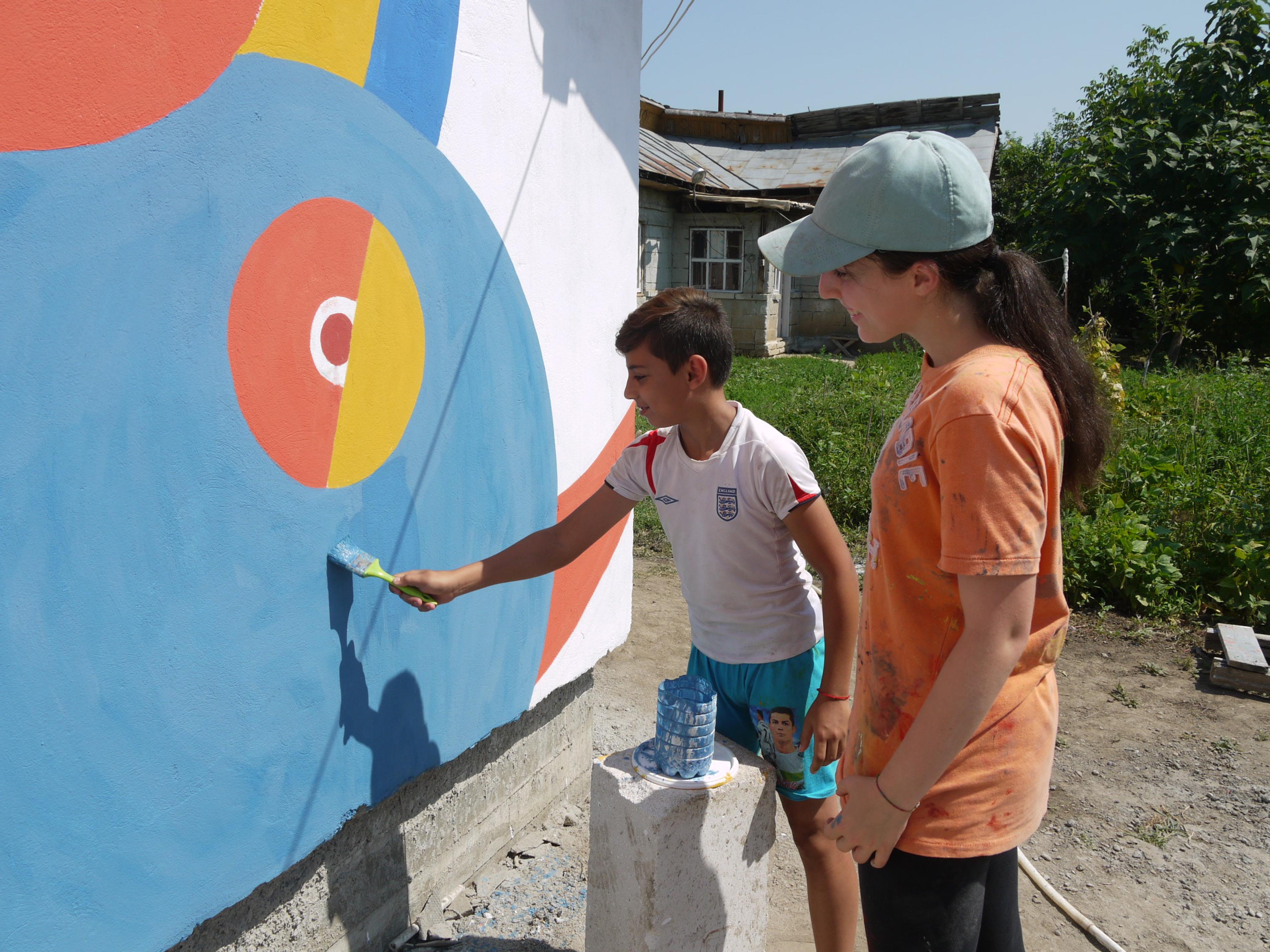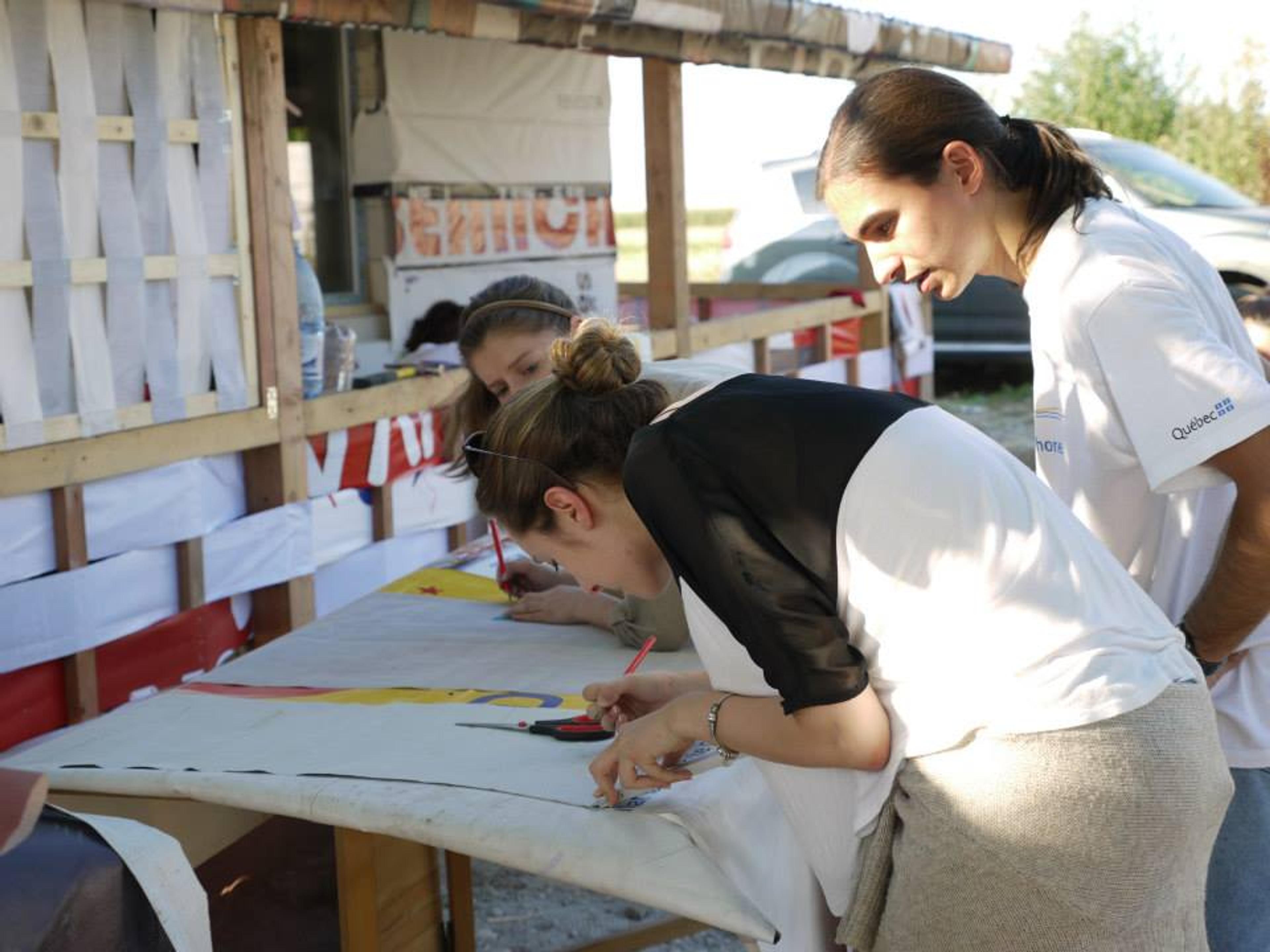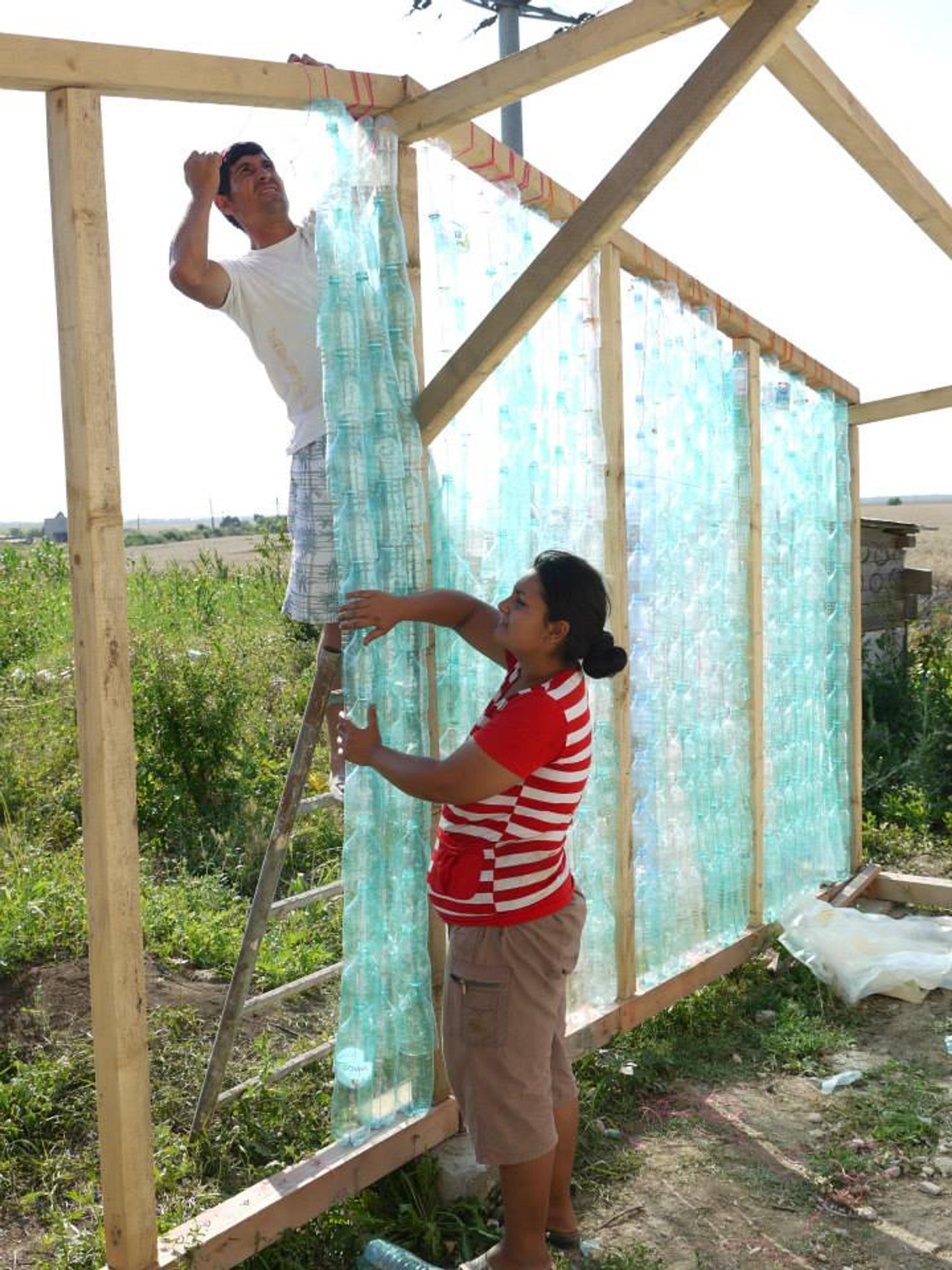
“Authorities that want to solve the problem of the lack of housing would rather talk to economists, urbanists, or architects, but they don’t ask vulnerable groups what their needs are.”
In 2012, members of the Arhipera Association were helping a family in Dor Mărunt, a commune in Călărași County, Muntenia, Romania, to build a home. “We’d designed several models, and they picked the one that sought to better fulfill their needs and we started to build it,” recalls Lorin Niculae. Lorin, the president of Arhipera, is the vice dean of the University of Architecture and Urbanism in Bucharest; Arhipera—an architectural design organization established in 2011 to nurture the growth of Romanian communities affected by extreme poverty—is primarily comprised of his architecture students and other volunteers. The family lived close to a landfill full of shards of ceramics; one student suggested using the fragments to frame the windows. The father of the family, who initially wanted to avoid utilizing refuse, felt inspired upon viewing images of the colorful mosaics of Gaudí’s Park Güell. Arhipera completed one window frame and, since then, the father has completed all the other frames for doors and windows with this mosaic.. “The propension for beauty translated,” says Lorin. He made a family tree from mosaics, then planted trees and bushes throughout the landscape. Now, “the garden is almost like a park.”

This, in Lorin’s mind, is a true success: the completion of the home but, more poignantly, the joy experienced by its owners in embellishing and tending to it. Arhipera designs and constructs homes and community centers not simply for people but alongside them—directly involving folks in both processes and actively collaborating with the communities they support to address their individual concerns. For example, many families need to keep their space small in order to avoid high costs to heat it, or want to emphasize the needs of future generations. One couple, Lorin remembers, shared an anecdote: their daughter’s friends quickly left her birthday party because their home was poorly ventilated. They insisted that Arhipera design with her in mind.



Having designed and built homes for impoverished communities across Romania, Lorin notes that “a lot of people ask us about indicators of success. Of course, the indicator of success is, we manage to build a house. But the most important indicator of success, which you cannot measure—it’s the people that start to look into your eyes.” At the beginning of each build, many residents avoid eye contact, says Lorin. “After they participate in designing and building and, in the end, have built a house of their own, they start to look you in the eye. This dignity, which is extremely important, is very well-related to having a house.” He explains that people often already have the skills necessary to build a home, sometimes constructing shelters from recycled debris; from form to function, Arhipera takes their cues from the communities themselves.
ArhiPera